This post may contain affiliate links. Please read my disclosure policy.
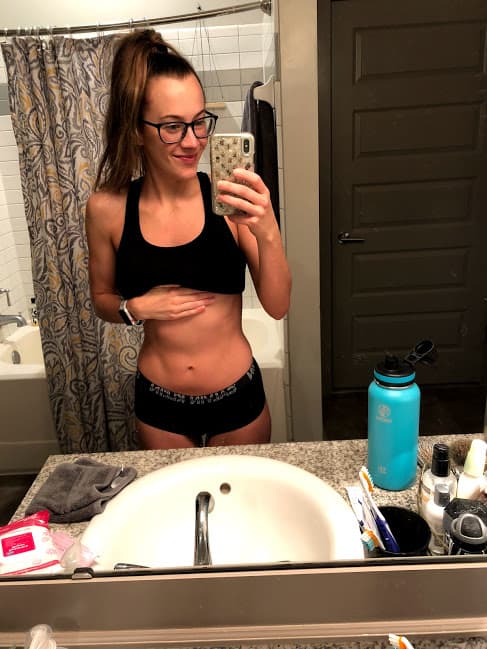
Topic #1.
Because we’re all coming from different experience levels regarding this topic, I wanted to start with the basics so that we’re all on the same page. This post will target more of the general population and those who are just beginning their fitness journey. So for my friends that are a bit more experienced with macros, bear with me! I will continue to go much further into depth with each blog post in this series.
The most important thing I want to emphasize in this post is that we are all different. We are all uniquely diverse, we each have different backgrounds, dieting histories, metabolisms, activity levels, eating habits, lifestyles; which all need to be taken into consideration before beginning any diet. It also means that we all have different starting points and that each of our approaches to dieting may look differently.
What works for one person may work for you, or it may not. But that is exactly why you don’t want to follow the exact same plan as your friend. Before you even begin to diet, you need to find a plan that is tailored to YOU. Tailoring a diet plan to your individualized goals, history, lifestyle, etc., has been proven time and time again to be the most effective approach in optimizing health and maximizing weight loss goals versus following a cookie cutter approach.
This post is meant to act as an overview – information you need to take into consideration before starting a diet. Like I said, I will expand on each of these topics in my posts to come.
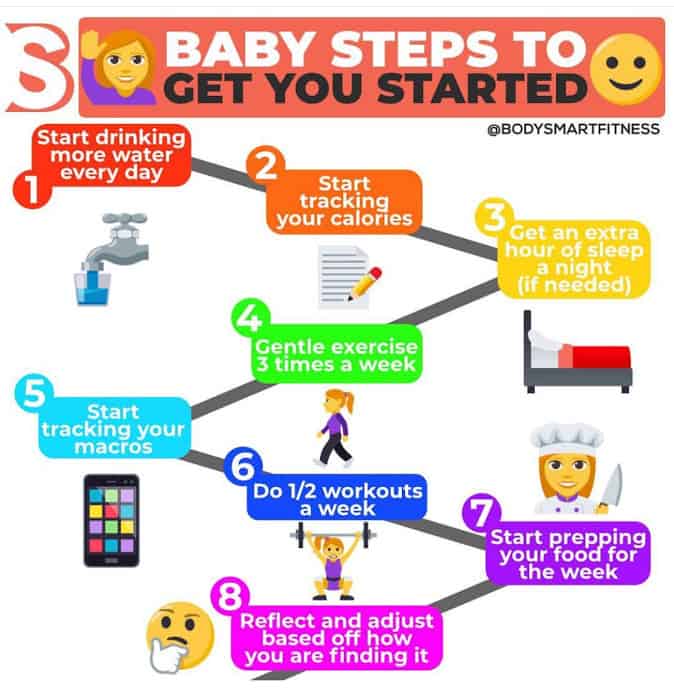
How to diet to maximize weight loss goals: The Basics
- You have to be in a caloric deficit.
- We ALL have different starting points and it is important for you to determine yours.
- Starting with minor modifications is critical. You don’t want to drastically reduced your calories. Lesser is not better.
- Adequate protein intake and weight lifting play an important in ensuring you are predominately losing fat instead of muscle mass with weight loss.
- Don’t choose foods just because they are considered “healthy.” You need to educate yourself on the calorie content and macronutrient breakdown too.
- Don’t underestimate the power and role of sleep.
- Don’t underestimate the power of daily movement outside your workouts!
1. You have to be in a caloric deficit to lose weight.
This one is probably obvious but it definitely requires some further context.
No, a “1500 calorie deficit” by itself is not defined as a caloric deficit. Nor is 1200 calories or 1700 or whatever number you may have associated in your head for it to be. This number, this deficit, varies among every single person depending what their current maintenance level of calories is.
As in, each person’s calorie deficit is dependent on the amount of calories they are currently eating and maintaining their weight at.
For example: if Jill wanted to lose weight and was currently eating an average of 2500 calories a day, a 400 calorie deficit for her would be 2100 calories. But if Kate wanted to do the same and was used to eating an average of 1900 calories a day maintaining her weight, the same 400 calorie deficit for her would be 1500 calories.
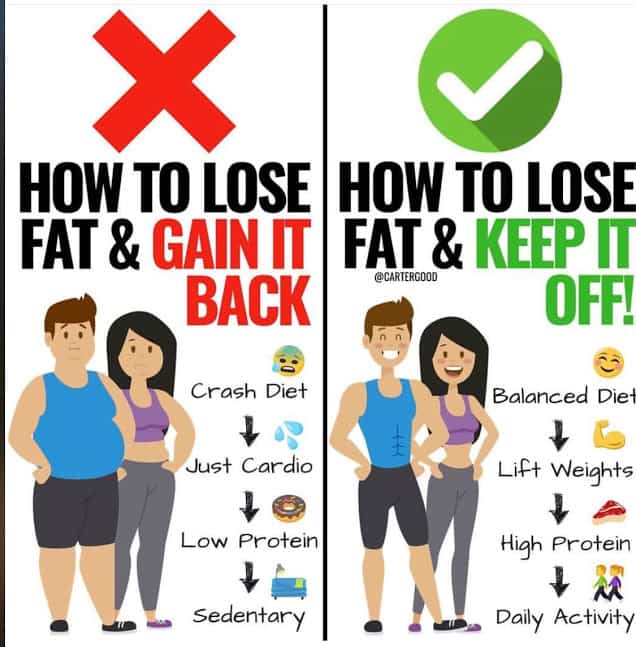
Yes, technically 1500 calories would be a deficit for Jill too, but this deficit is excessive given the calories she was previously eating at. The “lesser is not better.” This extreme is not only totally unnecessary (wouldn’t you want to eat more and still lose weight if you could?) But it is also not setting her up for success from the start.
Reducing calories, no matter the amount, will eventually cause your metabolism to adapt to those lower calories over time. It will become your new maintenance calories. If you automatically jump to 1500 calories when an appropriate deficit is 1900 calories, then your body will adapt to lower calories quicker. When your body beings to adapts to those lower calories from the calories you were previously at (your previous maintenance), weight loss stalls because there is then no more calorie deficit in place for weight loss.
So not only are you shortening the results you may have, you are also not leaving much wiggle room to continue making adjustments as progress begins to stall. This is why it is important to know YOUR starting point. I’ll expand on this more below.
2.We all have different starting points and it is important to determine yours.
The #1 best way to do this? Learn to track your food.
Calculators are great but they don’t tell the full story. So the most accurate way for you to determine what an appropriate caloric deficit is for YOU is to take 1-3 weeks to track everything you eat, eating as you normally would, so you know what your current maintenance calories are.
This is literally so important. Taking this step allows you to identify your starting point so that you can determine exactly how much of a deficit is optimal for you.
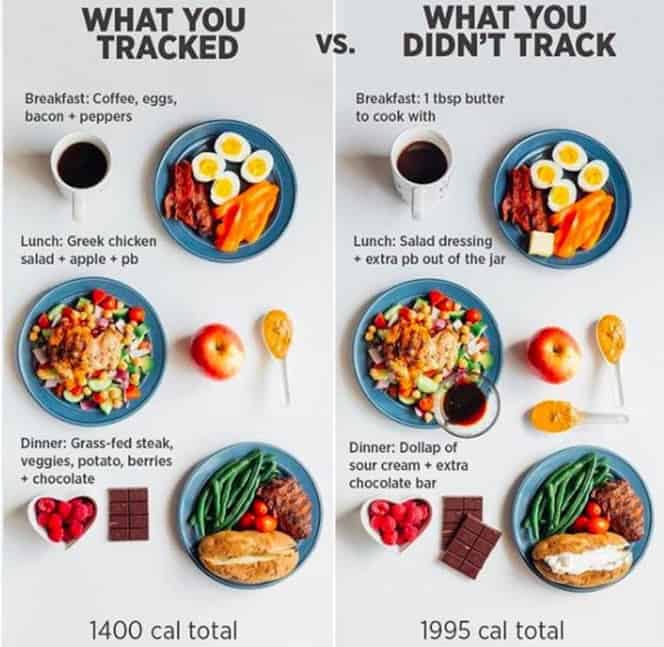
Not only that, but so many people tend to underestimate how much they are actually consuming. Tracking will help you put different foods and portion sizes into perspective, ultimately giving you the knowledge and capability to make smarter choices in the future without having to measure everything out.
During this week of tracking, you are gathering data about your current habits: how many calories and how many grams of each macronutrient (carbs, protein, fat) you are currently eating. As well as other vital things to take note of, such as fiber and water intake. You should be eating exactly as you have been! I know you will be eager to start making changes in your diet, but this step is important for accurate data collection so that you CAN use what you found to set appropriate goals and monitor progress.
After the initial data is gathered, you can most accurately identify a calorie deficit goal, as well ideal macronutrient targets. This data is also crucial when it comes to making modifications throughout your diet. Though as you begin to track your food throughout your diet you’ll be able to monitor this too which will help for modifications down the road if needed (like if you plateau). But still – it’s always super helpful to know your starting place! This ensures the most accuracy in macro/calorie number setting and in turn, the most success!
3. Start with minor to moderate modifications in your diet and exercise routine.
Sure, a more aggressive diet can achieve weight loss in a shorter amount of time, but research and experience have shown that there are limitations to how deep of deficit you can go before it causes serious damage to your metabolism. For men, this is generally around 1500 calories a day, and for women, around 1200.
Not only are extremes dangerous, but they are not substantial.
They are not enjoyable and people typically fall back into old habits quick because these extreme diets are not easy to maintain.
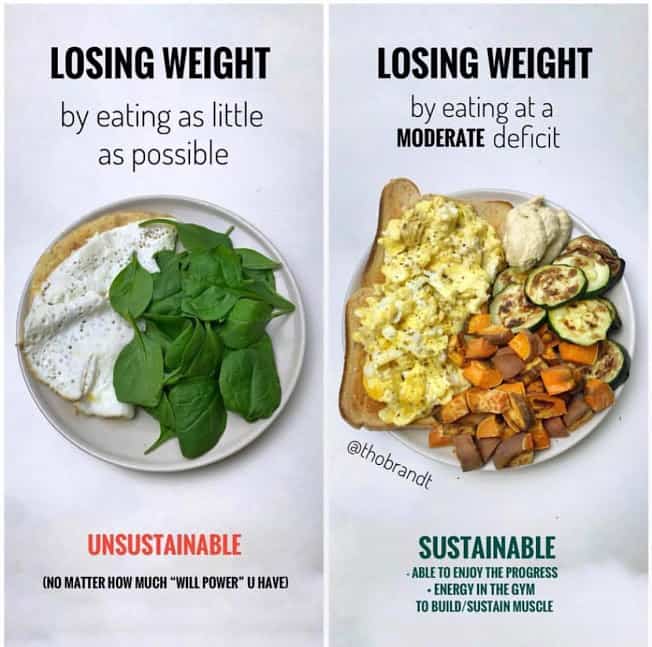
The best approach to guarantee the most success (not to mention to maintain your health and to prevent yourself from becoming miserable), is to start with minor to moderate modifications.
Again, this is where data collection regarding food intake and exercise is important. When a baseline is established, you can more accurately pinpoint what appropriate modifications are.
Dropping calories too low and more than needed will ultimately limit your results. For a number of reasons:
- It doesn’t leave you wiggle room to adjust calories when you plateau – Therefore, limiting the length of time you can diet, and therefore, the results you will see.
- You’re going to be less likely to stick to your diet – An aggressive cut in calories is not sustainable. You will be less likely to stick to your diet, again limiting your results.
- You’re going to be unhappy. Plain and simple. Have you ever tried to eat low calorie? It’s miserable and there’s no room to enjoy life.
- It leads to a restrictive mindset. THIS. The number this does on your brain thinking “the lesser the better.” It completely impairs your relationship with food and it is not healthy.
- It doesn’t set you up for long term success. The lower you decrease calories and the longer you are in a deficit, the harder it’s going to be to maintain your weight. And the easier it will be to put weight back on when you decide to get out of the deficit. Which you will evenly have to if you want to continue seeing results, yes. We’ll dive deeper into this.
Less wiggle room to adjust when you eventually plateau
No matter the amount you decrease by, after a while, your body will recognize this decrease and adjust to this new lower level of calories. Our bodies are smart and they will now start to maintain (instead of continuing to lose) at this new intake. When this stall happens, you will no longer see progress unless you continue to decrease your calories or increase your activity level.
That is exactly the problem with drastically reducing calories initially. You have no wiggle room when weight loss has stalled and you still want more progress to be made.
BUT if you start your diet at a minor or moderate deficit, you will have some wiggle room when you plateau.
This goes for exercise too. If you start with 30 minutes of cardio 4 days a week, your body will eventually adjust to that. You would be much better off starting with 30 minutes 2 days a week so that if you do plateau and need to tweak later down the road, you have the option to do so without killing yourself with an unreasonable, unsubstantial amount of cardio.
4. Just because it’s “healthy” doesn’t mean it’s always the best option to choose.
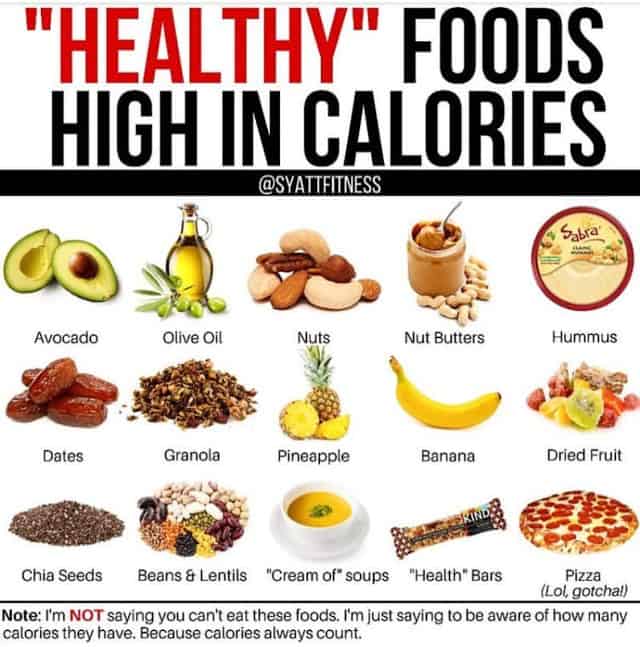
Just as shown in the picture above, there are many foods that fall under the category of “healthy.” I’m not saying that these foods aren’t because they definitely provide excellent nutrients to the body. But what I do want to point out is that they are calorically dense. Meaning they have a high amount of calories per small portion and generally speaking, the majority of the population tends to underestimate their consumption of them.
I remember being particularly shocked the first time I weighed out my peanut butter to put on my toast. I always thought I was just using a tablespoon, when come to find out I was eating 3 tablespoons. That is 200 calories over what I thought I was consuming. And I’m telling you, that kind of stuff adds up!
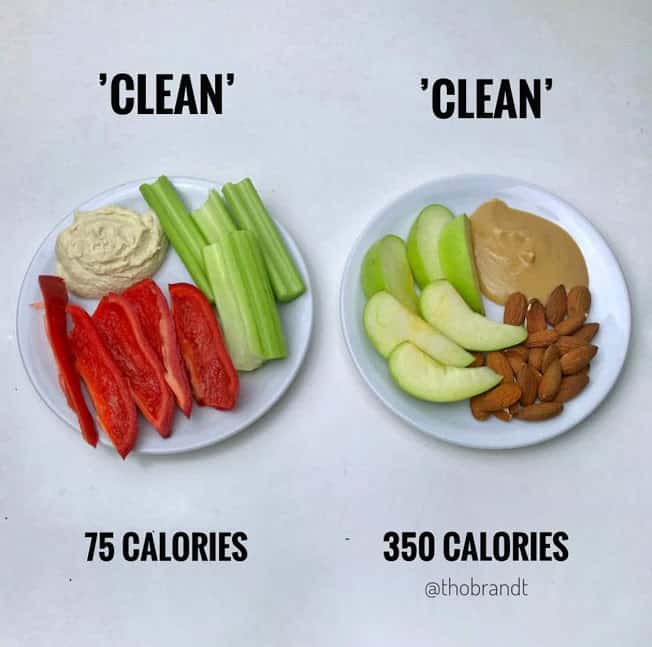
This is another reason why tracking food has helped so many when it comes to their weight loss goals. Just because you think something is healthy, or it is being advertised as healthy, doesn’t mean that isn’t loaded with calories or fat. Even just tracking for a short time allows you to become aware of portion sizes and make smarter choices in the future.
5. Prioritize protein intake and strength training.
It is important to have a balanced intake of all macronutrients, but protein is critical to preserve muscle mass throughout a caloric deficit.
You also need to develop a workout routine that maintains muscle mass and promotes greater calorie burn in the long run.
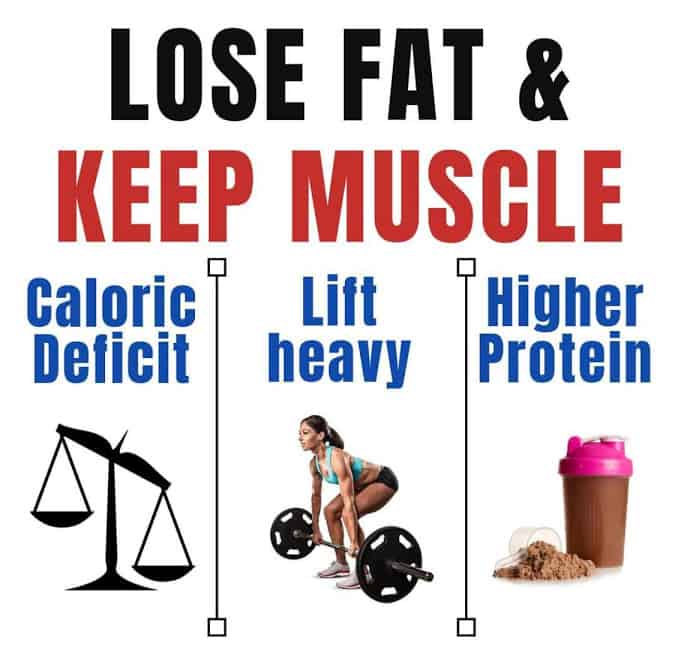
This means prioritizing strength training. You have got to lift some weights! And I am not talking about the 3lb weights that weigh as much as your water bottle. Not only will strength training give you that “toned” look you are looking for, but it is also is essential in promoting weight loss from fat as opposed to muscle tissue.
What do you think JUST doing cardio does for you? Sure, it may burn more calories during the actual workout. But it does not provide for continued calorie burning and increases in metabolism like strength training does. More importantly, it does not provide the stress to the muscles that is needed to maintain and/or build muscle mass.

In fact, cardio does the exact opposite; it signals muscle wasting. By just doing cardio, you not stressing the muscle, and therefore sending the signal to your brain that your muscle is not essential. When this happens, more muscle is burned than fat. Doing this for a long period of time usually results in “skinny fat, where you may lose weight, but you still have fat, except now with no definition or tone.
This is why we should not be making cardio the priority. This a topic that I definitely want to elaborate on in the posts to come!
6. Don’t underestimate the importance of sleep.
For most of us, sleep tends to take a back burner when it comes to prioritizing how we spend the hours of our day. Even just losing an hour or two has been shown to vastly affect our health.
You may be aware of the role sleep plays in mood and energy levels throughout the day, but the effects of adequate sleep on the body actually advances so much deeper than that. Sleep is your body’s time to recover. It’s when your body channels its parasympathetic (“rest and digest”) state, gets rid of excess wastes, builds connections between neurons in the brain, and processes thoughts and memory.
Hormones released during sleep are also the ones that build and repair the body. So you can see that by not getting enough, your body may not recover fully, resulting in decreased performance, excess cortisol and stress, and “fogginess” as a result of your brain not be able to adequately process everything from the previous day.
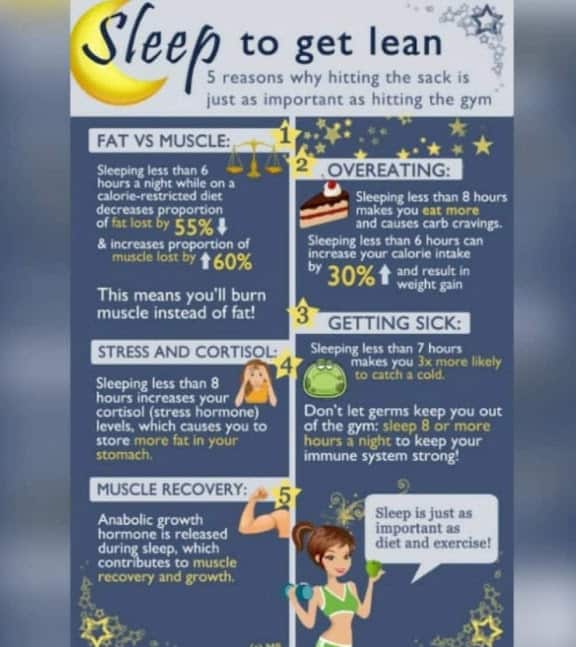
Like I said, these are the “basics” and most important things to take into consideration when starting a diet. In the posts to come, I will talk about making modifications to macros and exercise, setting up a workout regimes, diet/cutting strategies, and how to break plateaus. If you have any specific questions or things you want me to cover, let me know!
NEXT: The Science of Fat Loss: What are “Macros” and Tracking Macros vs. Just Tracking Calories (Topic #2)

